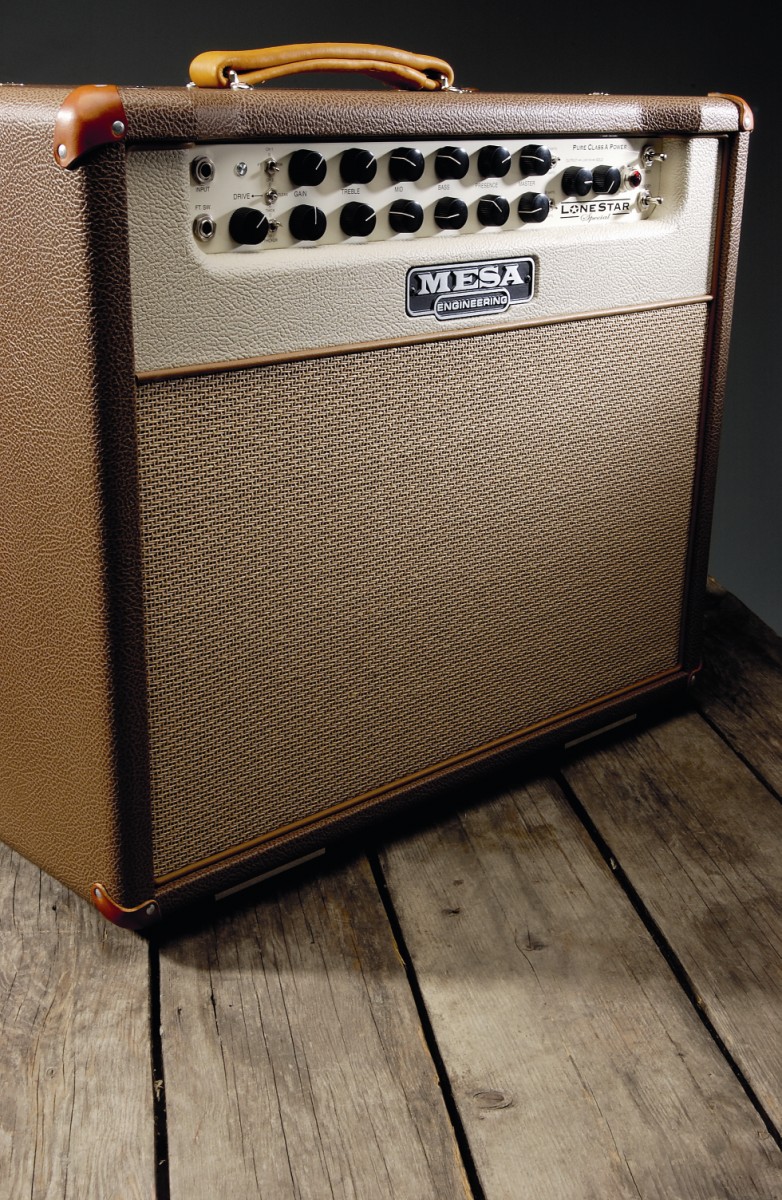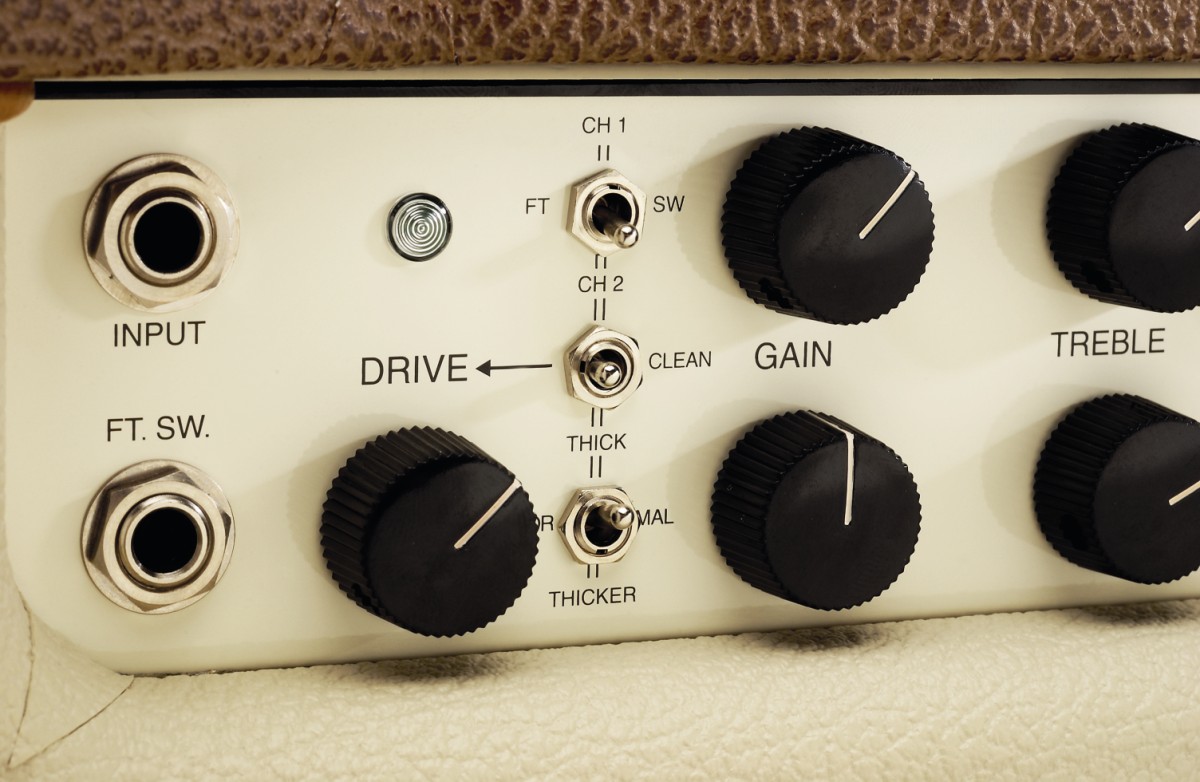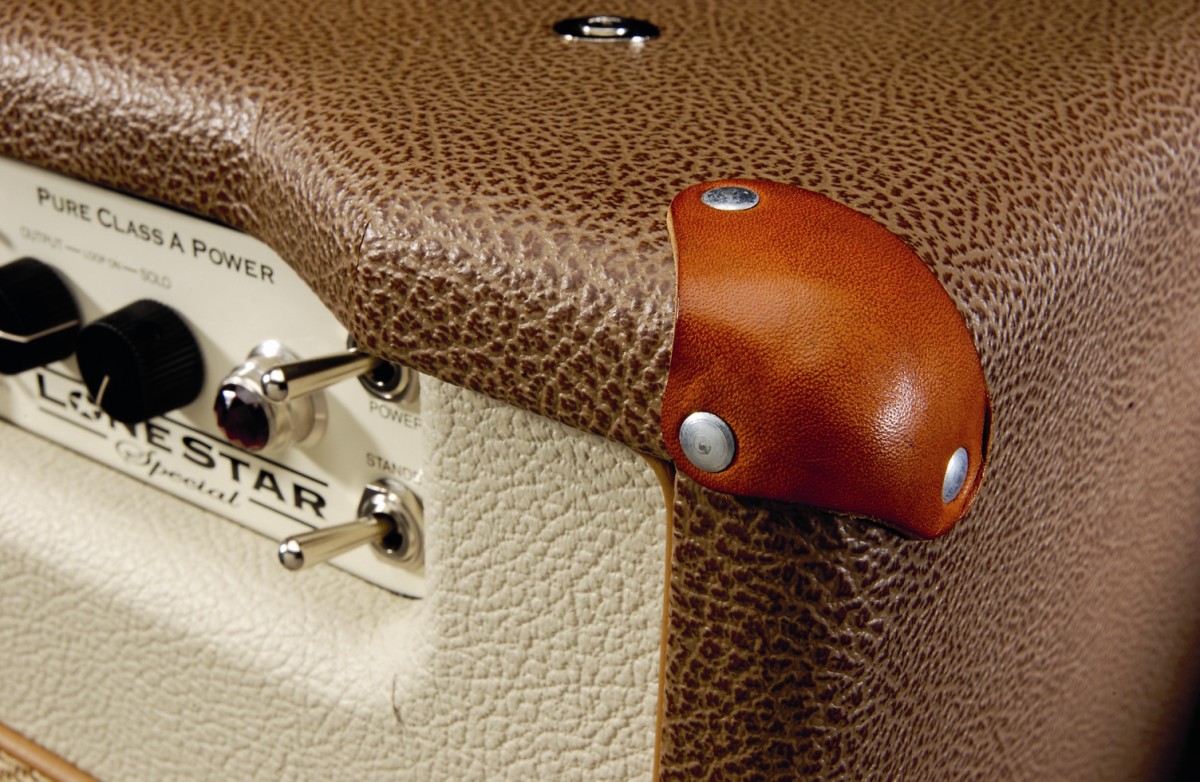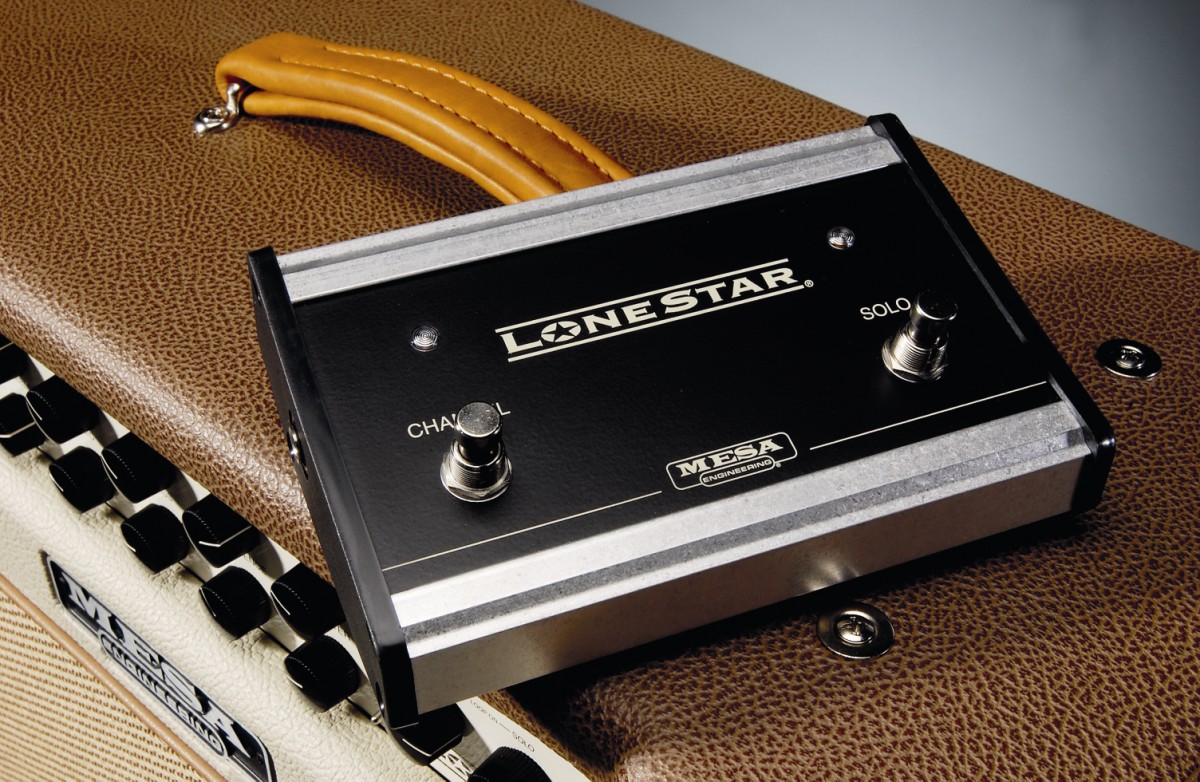MusicRadar Verdict
There´s a lot of seriously hot competition at this level, but for sheer tone the Lonestar Special is ahead of the pack. For blues, rock, country, jazz or any combination, it´s one of the ultimate guitar amps at any price.
Pros
- +
Power stage is perfect. Superb styling.
Cons
- -
The CE-approved steel grille doesn’t look very sexy.
MusicRadar's got your back




Following on from the 6L6-powered Lonestar Classic range, the Lonestar Special marries the same preamp to a clever Class A power stage that can be run in single-ended and push-pull modes for a wide range of outputs with a different tonality that changes the amplifier´s character, while still managing to complement the original design concept.
Like all Mesa products, the Lonestar Special is built to last, which means that despite its relatively small dimensions, it´s still quite a handful to carry around, so we´re glad to see the inclusion of snap-in castors on this amp.
The styling is impeccable, marrying cocoa and cream vinyl with a jute speaker grille for a very cool vintage look. The ply cabinet is up to Mesa´s usual exemplary standard, and on this sample the vinyl is neatly applied, apart from two small V-shaped pieces in the corners under the control panel, which stand proud and spoil the perfection we´ve come to expect from Mesa. We´ve seen other Lonestars where vinyl cuts are virtually invisible, so this is undoubtedly a one-off.
Like the Lonestar Classic, the Special uses an aluminium chassis, which for this amp is powder-coated in a gloss, off-white enamel that blends nicely with the vinyl colours for an appealing vintage effect. Inside, you´ll find a typically neat layout, with a high quality double-sided and through-plated circuit board holding most of the electronics and flying leads to the front panel components, for improved reliability and ease of servicing.
Controls
The front panel controls are arranged into two almost symmetrical rows of gain, bass, mid and treble, with separate channel volumes and an extra gain knob on the lower channel. To the right of these are two overall master volume controls that can be preset at different levels for rhythm and solo use. There are three small toggle switches by the gain controls: one is for selecting channels when the footswitch isn´t being used; the second one switches the extra gain stage on the lower channel control; and the third is a voicing preset.
As with the Classic, you can assign power output levels to each channel, but the Special goes further, offering three choices of 30 and 15 watts in push-pull, or 5 watts from just one output valve in single-ended mode. On the rear panel, you will find a series effects loop with variable send level, a trio of speaker outlets, dual reverb level controls with a tone switch and external switching jacks for channel and solo functions.
The dual master arrangement and effects loop can be bypassed here for those players who don´t need these features. There´s also a handy slave output with its own level control, a separate jack socket for toggling the reverb effect and a switch for the chassis fan. Overall, the features on the Special are typical of the high standard we´ve come to expect from Mesa, and just about every need is catered for on this amplifier.
In use
The big difference between the Lonestar Classic and the Special is in the power stage, where the Classic´s quartet of 6L6s have been replaced with EL84s. This lower output valve has its own sonic characteristics and is easier to drive into overload, altering the amp´s response and tone compared to the Classic.
Fat mid-range and expansive headroom are swapped for a more compressed, squashy tonality with balanced bass and mids topped by a gorgeous chiming treble that flatters any guitar but sounds quite incredible with single coils. The top channel´s gain control covers sparkling cleans at lower settings up to a pretty aggressive crunch sound that´s just right for stinging blues leads. The lower channel sounds a little darker with slightly more gain on tap.
For higher gain styles, you can flip the drive switch to add an extra preamp valve that cascades into the next stage for that archetypal Boogie lead sound, with a long, sweet sustain and a very vocal quality that´s a delight to play. The three-position voicing switch on this channel works to fine-tune that lead sound, adding even more extra meat to single-coil guitars, or conversely stopping humbuckers from sounding too flabby on lower notes.
In the normal position, it´s classic Fender; the ‘thick´ option gives more of a brown ‘Plexi´ tone, while ‘thicker´ takes you into Mark 1 Boogie territory and works best with that extra gain stage.
Power
The assignable power switches make a big difference, much more noticeable than on the Classic version. Full power (around 30 watts) is ideal for rhythm playing, with more than enough output to use unmic´d alongside a loud drum kit. If you need more headroom, an extra speaker jack ramps up the output to around 35 watts at the expense of a shorter valve life.
Switching to 15 watts using one pair of EL84s softens the attack but maintains that crunchy highend effect, while switching the Special into 5W single-ended mode changes the tone dramatically, emphasising even harmonics instead of odd for sweet, bell-like chords at lower volumes or fat, girthy lead sounds when pushed. Driven hard, five watts is plenty loud enough for lead work and we found ourselves using this option all the time for solos; it´s one of the sweetest and most gratifying sounds we´ve heard in a very long time.
Dynamic response is widened by Mesa´s patented rectifier tracking feature: on the Special this selects silicon diodes automatically for the 30W setting or a 5Y3 rectifier valve for the 15 and 5W options.
The Lonestar´s reverb is utterly gorgeous. Mesa has always excelled in making the most of this effect, but the Special´s reverb transcends everything we´ve heard before. Selecting the bright tone gives more of a vintage Fender sound, while the warm option adds a spatial halo that hangs in mid-air for a three-dimensional effect that´s seductive and highly addictive.
Special
The ‘Special´ designation has often been used on guitars to indicate a stripped-down, no frills version, but where this amp is concerned, Special means really special. We think the Lonestar preamp has found its ideal partner here with the Special´s quartet of ‘nine-pin power punks´, as Randall Smith calls them.
For some players, the high headroom and fat mid-range of the 6L6-powered Lonestar Classic could be a little overpowering, especially for smaller gigs. The Lonestar Special´s choice of outputs is much more useful at lower volumes, making it easier to push into that area where the power stage starts to overload, which is where the best tones come from.
Like all Mesa products it isn´t cheap, but you´re buying into serious tone, pro-level build quality, and a heritage that spans 35 years of amplifier innovation and advancement, from the Mark 1 Boogie all the way up to the latest models.
There´s a lot of seriously hot competition at this level, but for sheer tone the Lonestar Special is ahead of the pack. For blues, rock, country, jazz or any combination, it´s one of the ultimate guitar amps at any price.
MusicRadar is the number 1 website for music makers of all kinds, be they guitarists, drummers, keyboard players, djs or producers...
GEAR: We help musicians find the best gear with top-ranking gear round-ups and high- quality, authoritative reviews by a wide team of highly experienced experts.
TIPS: We also provide tuition, from bite-sized tips to advanced work-outs and guidance from recognised musicians and stars.
STARS: We talk to musicians and stars about their creative processes, and the nuts and bolts of their gear and technique. We give fans an insight into the actual craft of music making that no other music website can.
“This update reflects everything we believe modern gear should be”: Neural DSP gives the Nano Cortex an almighty power-up with free NanOS 2.0.0 system update
“It’s honestly got me thinking hard about adding one to my own studio set up”: Two Notes Reload II review
“Gloriously adorned with a gold edge burst finish over a gold paisley and sparkle top”: Gretsch unveils the Paisley Penguin – a rare bird that growls – and the Honey Dipper Special, a resonator for all your roots rock manoeuvres










